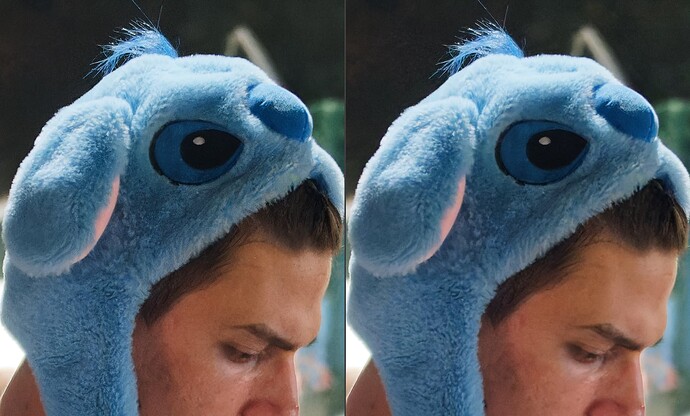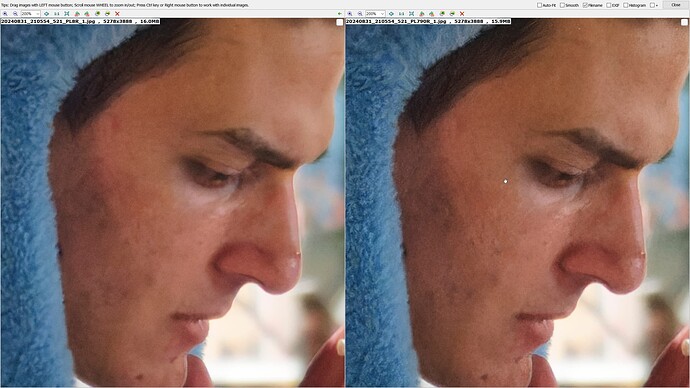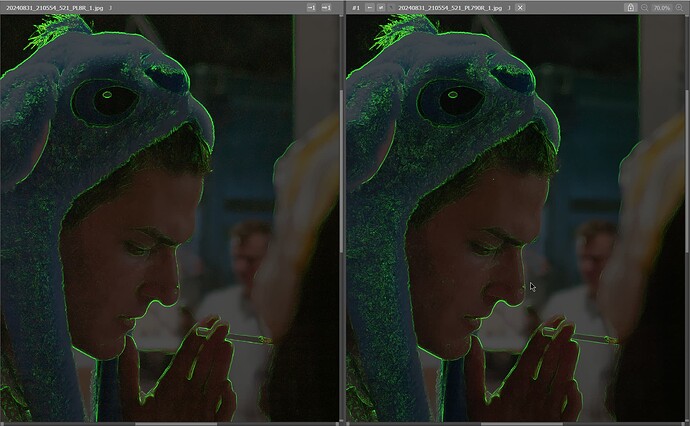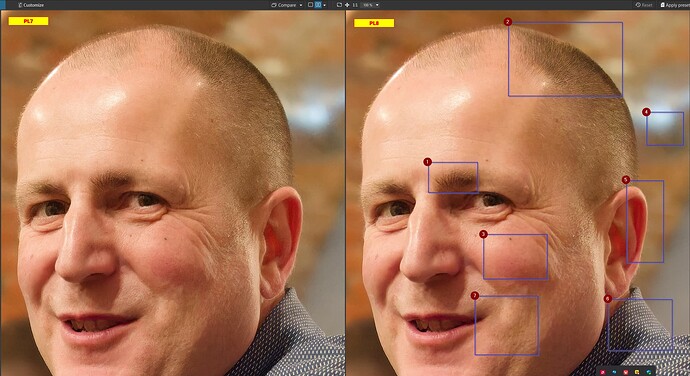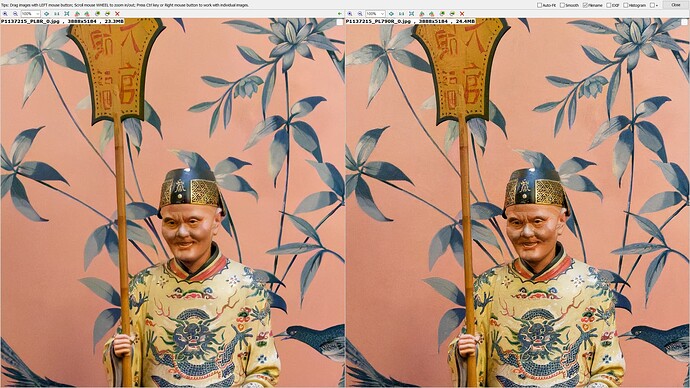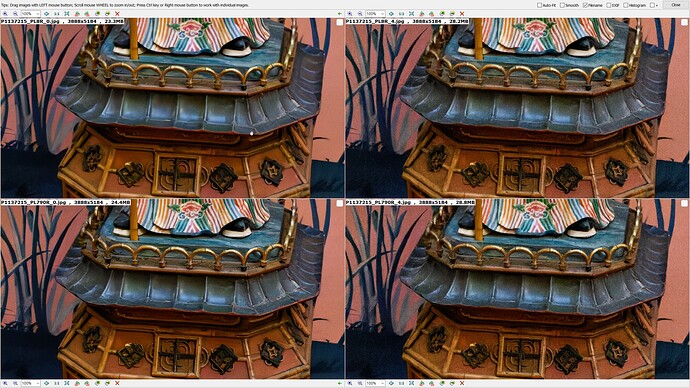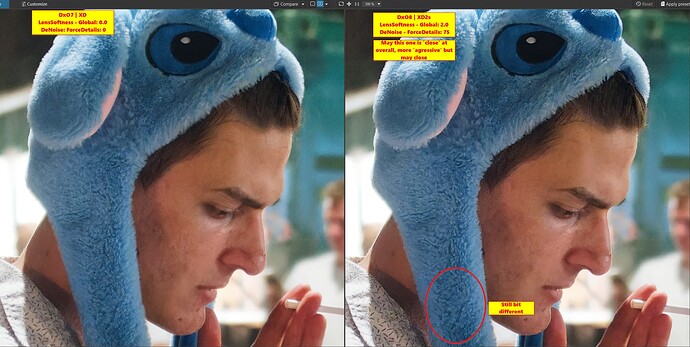[Original title]: Disappointing result with PL8 vs PL7 on DeepPRIME XD/XD2s
[Updated 1. title] Disappointing result some cases (high ISO) with PL8 vs PL7 on Lens softness correction?
[Update 2 - RESOLVED]:
Some update/my findings (and from this forum colleagues feedback):
- XD2s (DxO8 PL) clearly better than XD (DxO7 PL)
- Lens softness algorithm definitely changed. Seem less aggressive, and seems applied in smaller/less area - more in the DOF zone. Especially in edges definitely less artifact.
- PL8 lens softness at base values provide softer results vs. PL7. However its seems ‘softer’, overall the PL8 seems proved more cleaner results. Important note: In the PL8 release its highlighted: ‘Upgraded lens softness compensation, free of fringing and artifacts’
- May PL7 lens softness was to aggressive.
Overall: Lens softness in PL8 vs PL7 changes at large. May wort to check thru the settings for your style
And that change i was less aware (i expect far less difference in this change). If you like your photos to be ‘very sharp’ , may check thru some settings, like Softness-Global: +1.5 or similar.
Addition: very good video (Youtube) from Robert May about DxO8, and great demonstration about XD2s.
[Update 1]: In the meantime, i think its not related with XD2 vs XD2s (seems XD2s is usually better), but with ‘Lens softness compensation’…
[Original]:
I check thru in 7 photos (my own), how PL8 is better on that than PL7. And approx 4 from 7 cases PL7 results of far better, others may equal. PL7 results more detailed, and even background is more smooth. I not talk about very-very small differences. Pretty visible in 1:1 (100%)
Other results / Experiences on that so far?
I check a few review on Youtube: Peter Forsgård ; Matti Sulanto, but seems they show like one image, with good lights, etc, and PL8 look a bit better.
May its in my raw files (may this image breaks the logic), my camera, lens, PC (Win11) or GPU config or some constellation of the things. I don’t know. But difference is visible at first sight. I use the same .dop. Exported and compared to tiff files. May i miss something.
Example: Left is PL7, right is PL8. I pick up the ‘most visible difference’ image/section. Zoom: 100%
Please, can someone double check? RAW file and .dop attached below.
Body: Olympus EM5.Mk3.
Raw file:
20240831_210554_521 Copy.ORF (20.8 MB)
Edit: for some reason i upload under wrong filename (copy of). But i not able to update/replace… Pardon. But that’s the raw.
orf:
20240831_210554_521.ORF.dop (14.1 KB)
Additional question: How i know in PL8, its use XD or XD2s during export?
Andras, long time DxO user…strong text
